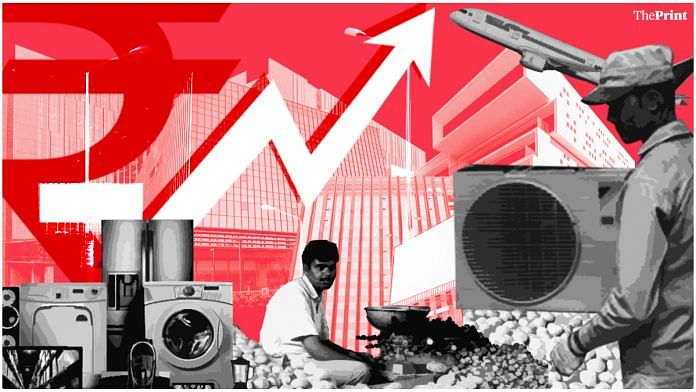The economy may be faced with many uncertainties, but Corporate India has pulled through a difficult decade and is now in a position where it has never had it so good.
For a sample of 2,785 companies listed on the stock exchanges, net profits in 2021-22 were 9.7 per cent of sales, a level not seen in the last decade and probably not since the financial crisis of 2008 (data source: Capitaline). Just a little more than two years ago, in 2019-20 (mostly pre-Covid), profits were as low as 3.4 per cent of sales.
The best year before the latest one was 2016-17, when the profit margin was 7.2 per cent. In most other years, it hovered around the 6 per cent mark, give or take a bit. Against that backdrop, 9.7 per cent is stratospheric.
There are four reasons for the profit surge. First, most companies have paid off debt, thereby reducing their interest outgo. Second, the financial sector (banks, shadow banks, insurance companies, brokerages, etc) has seen a turnaround after grappling with bad debts and poor balance sheet growth for over half a decade.
Financial sector profits have more than quadrupled in three years. The sector’s share in total listed company profits, after having collapsed from 27 per cent in 2012-13 to 8 per cent in 2017-18, has risen back to 26 per cent for the latest year. That has made a huge difference.
Third, companies dealt with the Covid shock very successfully by slashing costs. This was seen most dramatically in 2020-21, when sales declined by about 4 per cent but net profits more than doubled from the previous year — and then rose a further 65 per cent a year later.
Finally, companies have taken advantage of the finance minister’s offer of a lower tax rate on corporate profits, linked to their willingness to give up some exemptions. Companies have naturally chosen the option that works better for them, so the overall corporate tax (as a proportion of profits) has come down, thereby boosting post-tax profits.
The result today is that a lot of companies are very well positioned to invest in new capacity and grow their business, without having to worry about leverage. Equally, the banks are now in a good position to lend again.
Also Read: For India, economic disorder is a reality to be reckoned with, but it also presents an opportunity
The fly in the ointment is household consumption, which has not grown much because inflation has squeezed demand and also because many people have lost their jobs. The latest quarterly numbers show that the share of private consumption in GDP continues to shrink. Rising interest rates will further squeeze loan-financed purchases.
In such a scenario, there is little need for fresh capacity except to feed export markets and the sectors where the government has been focusing its spending to make up for the lack of private demand. In fact, the decade-long story is that the sales of our sample list of companies have barely doubled. That translates into annual growth of about 7 per cent. Adjusted for inflation, real growth is even more modest.
Looking ahead, the short-term outlook for a demand recovery must be considered bleak, given where inflation is and where it is likely to be for months to come. The possibility of a still bigger oil shock would upset the domestic apple cart while the threat of stagflation or recession abroad is bad news for exporters. Hence a revival of private investment may lie beyond the horizon.
As and when things change and investment kicks in, the economy would be in for a boost. But people have been waiting for such a boost for some time.
It is hard not to link this problem with the growth of income inequality in recent times. Millions have dropped out of the job market, and 90 per cent of employment in the growing gig economy comes with a lack of permanence.
The resulting Marxian-style “under-consumption” suggests a Henry Ford-style solution — pay people better and they will buy more of your products. Today, far too many people earn far too little to support consumption growth of the kind the economy needs. The flip side of that is obvious: Companies are pocketing too much as profit!
By special arrangement with Business Standard
Also Read: Indian economy looks like a champ while the world struggles. But wait, don’t celebrate yet



